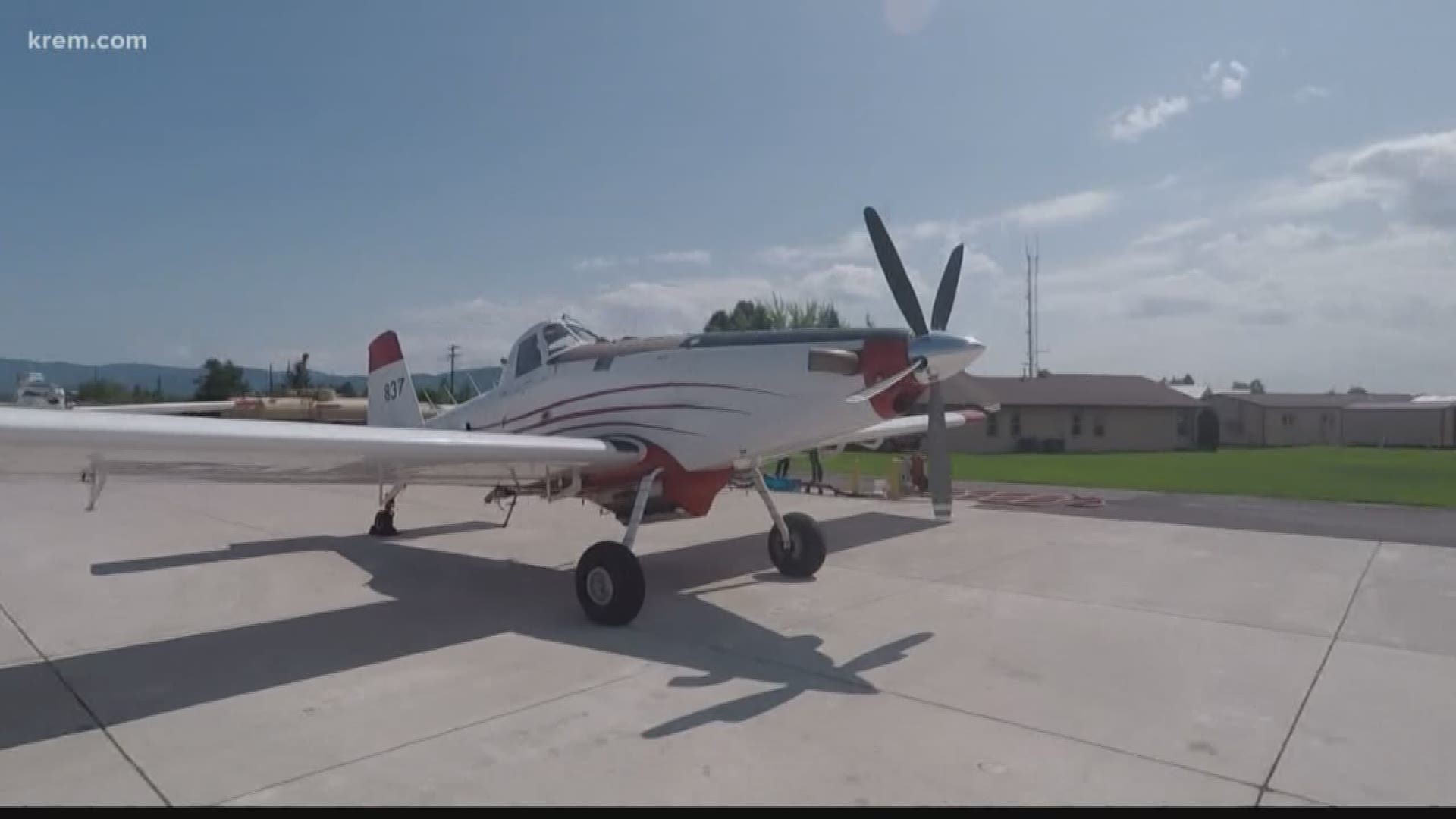We see them from below, but not usually up close.
"SEAT," or a single engine air tanker, is used to fight fires around the Inland Northwest.
A pilot controls the flow of retardant, all while working with crews to make sure they're working as fast as possible.
"We just go where the fires are," Brett Hickman, air tanker pilot, said.
It sounds like a simple concept, but after filling up it's go time.
"Sometimes we go on one load. Sometimes we do multiple loads. Sometimes we do 20 loads," Hickman said.
Some tanker pilots call it a "dance in the sky" for them and their cohorts. The crews don't only have to worry about fighting the fire, but also about flying with other aircraft near them.
"You've got a lot of guys watching out for you, but you've got to make your own calls too," he said.
Hickman works out of Coeur d'Alene's tanker base while on contract from Arkansas. He gave us an inside look at the tanker plane he flies.
In his compartment, he can see how much retardant he has left in the 800 gallon tank, which can hold retardant or water. He also controls how much he drops and how fast it dispenses.
He has to combine this with flying accurately over the flames. All the while, flying in North Idaho isn't always easy. as mountains and hot air from wildfires can pose significant challenges.
"If you get too close, you can feel the heat come off it. It will bump you up a little bit," Hickman said.
Hickman said he looks at his work as a way to buy the guys working on the ground, who he said are the real heroes, some more time.
"It's great. We're just trying to help the guys on the ground," Hickman said,. "We're protecting them. We're protecting dozer lines and dozer operators."
Editor's Note: The below video is a 2018 report about fire officials saying one air drop of water can save hours of work.

